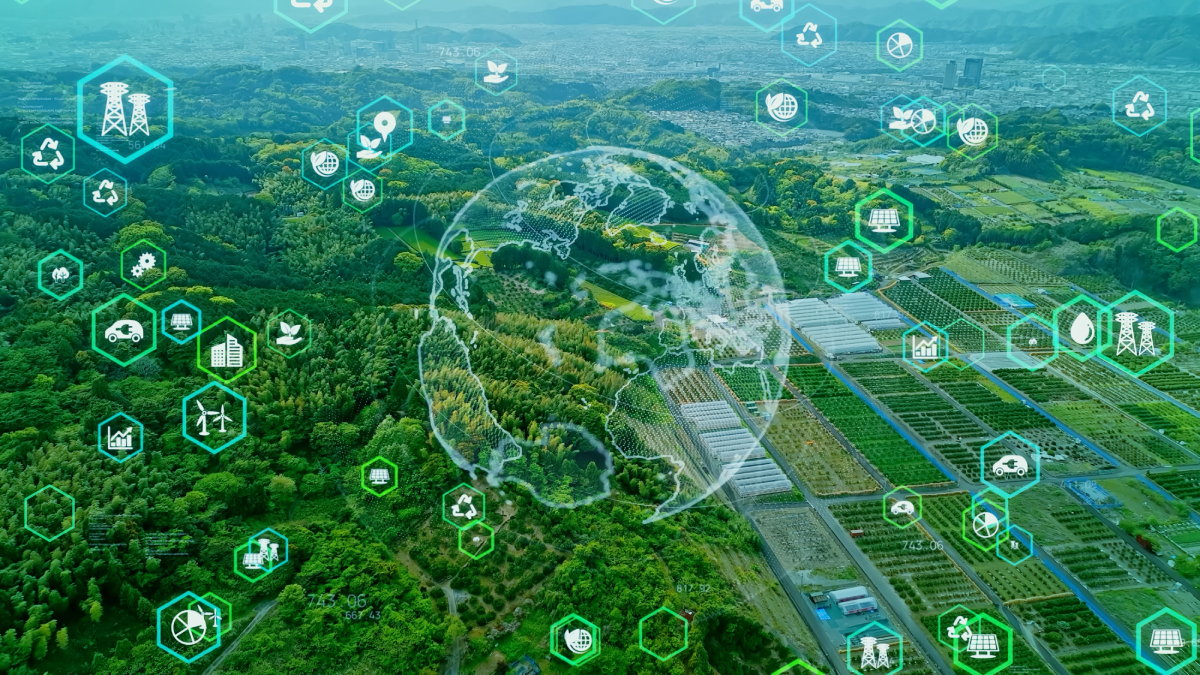Data centre operators have been a driving force for innovation in energy production, management and distribution over recent years. Headline-grabbing predictions about the growing energy demands of data centres have been challenged by the success of the industry in reducing consumption.
The fact that energy demand has increased only modestly over the past decade, despite the exponential growth in data and workloads, is no accident. The continued growth of the sector relies on data centre operators satisfying the competing demands of alleviating pressure on the electricity grid, enabling net zero policies, while at the same time responding to the ever-increasing demand for data storage, processing and distribution.
At a geopolitical level, as the availability and price of power becomes increasingly volatile, there is greater urgency to deploy home-grown sources of energy. Implementing a holistic energy strategy that focuses on indigenous renewables can contribute to grid stability and the reduction of emissions. It is also key to achieving national energy independence and decoupling our supply from an unstable external supply chain.
The data centre sector has seized on the opportunities to foster innovation in energy management at a scale and speed unmatched by other industries. Where energy management is not a core competence, working with specialist partners enables data centre operators to develop a more dynamic energy strategy that can mitigate the energy related risks that threaten the resilience of operations. In doing so, data centres support a more secure and sustainable energy future for us all, while establishing a clear path for their own growth.
Flexibility is key
Adopting renewables alone is not the solution. The intermittent nature of renewable energy production can challenge the stability of the electricity grid during times of peak demand. Flexibility has become increasingly important to control the balance between supply and demand and prevent power outages while allowing us to continue accommodating increasing amounts of renewable energy and prevent the need to burn coal or gas when the grid is under stress.
In the UK, National Grid’s Power Responsive annual report says that demand-side flexibility, implemented through programmes such as demand response (DR), onside dispatchable generation and/or storage are key to a mutually beneficial relationship between data centres and the grid.
Demand response offers data centre operators the opportunity to challenge the prevailing negative media narrative relating to energy consumption by behaving as good grid citizens. The flexibility created by every data centre that participates in DR actively contributes to grid stability and the transition to renewables. While the financial rewards of participation alone make it an attractive proposition, including flexibility in your energy strategy should be considered a prudent measure. DR provides a safe way to test back-up systems while the grid is still available. As many grid operators around the world threaten, or have already implemented, restrictions on maximum energy use and new grid connections for data centres, preparing now for a seamless transfer to backup systems should a maximum demand threshold be reached, could mitigate any resulting threat to uptime.
Dynamic response
Intermittency goes both ways. In the same way as reduced levels of production can threaten the availability of supply, an over-supply of renewable energy being placed in the network can make it more sensitive to sudden changes in frequency and compromise grid stability. Fast Frequency Response (FFR) creates a rapid reduction in demand – under a second in some markets.
Even a very ‘short burst’ response of a few seconds or minutes helps the grid operator balance the system if it is disturbed. Energy is provided by the data centre’s batteries or UPS. Rather than adopting a reactive approach, dFFR (dynamic FFR) takes FFR a step further and continually balances energy between the grid and battery storage. This also maintains batteries and the UPS as a continually functioning part of the data centre – not just a back-up measure, enabling the data centre operator to access the value from the asset.
As commercial, industrial and residential energy use evolves, and ageing electricity grids creak under the strain, data centres can be a vital part of the solution. The adoption of flexible energy strategies that actively contribute towards grid stability and emissions reductions will strengthen the industry’s energy resilience and put it on a stronger footing when faced with punitive legislation and energy markets volatility.

